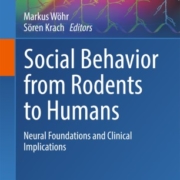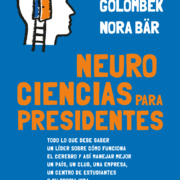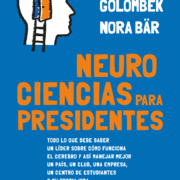Cardiac Interoception in Neurological Conditions and its Relevance for Dimensional Approaches
Yoris A, Garcia AM, Salamone P, Sedeno L, Garcia-Cordero I, Ibanez A.
In Tsakiris M, De Preester H (Eds). The Interoceptive Mind: From Homeostasis to Awareness. London: Oxford University Press. ISBN-10: 0198811934.
En este capítulo editado por Oxford University Press, proponemos un enfoque dimensional y transdiagnóstico para el estudio de la intercepción (la percepción de las señales corporales) a lo largo de múltiples trastornos neurológicos, centrándonos en las diferentes dimensiones interoceptivas; la relación entre la interocepción- emoción-cognición social; y sus correlatos cerebrales.
Para leer la nota completa hacer click aquí
Frontotemporal dementia and potential therapeutics
Kumfor F, Baez S, Ibañez A.
In Miao-Kun Sun (ED.), Research Progress in Alzheimer’s Disease and Dementia, 2016, Volume 6, pp. 129 – 168. ISBN: 1634851722, 9781634851725.
En este capítulo revisamos la clínica, el perfil neurocognitivo y patológicos en los subtipos de la demencia frontotemporal (variante conductual, afasia progresiva primaria: semántica, afasia no fluente progresiva y progresiva logopénica). Luego se analizan los tratamientos sintomáticos, considerando las características farmacológicas, conductuales, y cognitivas de dichas intervenciones.
Presidents have emotions, too.
García, AM, Ibáñez, A (2017)
In D. Golombek y N. Bär (eds.), Neurociencias para presidentes (pp. 105-123). Buenos Aires: Siglo Veintiuno.
This chapter discloses the main neuroscientific knowledge on human emotions. It offers a classification of various types of emotions, feelings and emotional states and describes the experiments that reveal their brain bases. In addition, multiple links between emotions and other cognitive domains are characterized.
The presidents also make decisions
Ibáñez A, García AM, Manes F (2017)
In D. Golombek y N. Bär (eds.), Neurociencias para presidentes (pp. 25-45). Buenos Aires: Siglo Veintiuno. ISBN: 978-987-629-721-9.
This chapter offers a gentle but informative approach to the most important neuroscientific discoveries about decision making. It is shown that decisions are crossed by personal history culture, and respond to unconscious factors, influenced by emotional states, implicit bias and wrong beliefs. In summary, here we unravel the brain base of decisions, from the simple and safe to the complex and unpredictable.








